When people think of antelopes, they usually picture something like wildebeests or Thomson's gazelles. There are over 100 species of antelopes in total. Among them, there are more than 40 species of duikers, to which the heroine of this story belongs. Imagine working for a tour company at the base of Mount Kilimanjaro. What would happen if one day, a very young and lost antelope fawn was brought to your office?
This story began in February 2022, when a frightened little antelope was brought to our office. It was found right in the village of Machame, where our Aishi Machame Hotel is located. The gardeners were checking the water pump in the canal and came across a lost antelope fawn wandering alone. It was clear that the little Duikers are a subfamily of horned ungulates, grouped into the informal category of antelopes, native to Africa. The word "duiker" comes from the Afrikaans word "duik", which in turn is derived from the Dutch "duiken", meaning "to dive". Duikers predominantly live in forests and, when threatened, seem to dive into the underbrush. Pay attention to the tuft on Nyasi's head in the photographs - it's a characteristic feature of duikers. had been left orphaned, and in the coming days or even hours, it would have died from hunger or at the hands of villagers. In rural Tanzania, there are unfortunate practices when it comes to dealing with wild animals: children might throw stones at monitor lizards, superstitious adults kill "death-calling" owls, and poachers set traps for antelopes to use their meat for food. Most likely, something similar happened to the baby antelope's mother.
What can one do in such situation? From time to time, we raise birds and small animals like squirrels and monkeys that we find injured on our hotel's premises due to accidents like electric shocks or wounds. Occasionally, newborn squirrels fall out of tree hollows, and if we can't find their home and family, we raise and keep them safe until they grow stronger, then release them into the wild. However, our antelope, although considered he common or bush duiker reaches a shoulder height of 50 centimeters (about 19.7 inches) and typically weighs around 20 kilograms (about 44 pounds). species, is still a fairly large animal. We didn't have suitable conditions for her, and there were no nearby animal rehabilitation centers.
We decided to keep the orphan with us until we figured out what to do. Fortunately, we had experience interacting with injured animals in the past. Some members of our team had worked with rehabilitation centers, and we were also supported by professional rangers. The first few days are critical for antelopes in stressful situations—if they survive the first 72 hours, there's a chance for them to recover.
Our task was to provide the duiker with a safe and comfortable place, and teach her to eat and use the restroom. Initially, the only suitable food was goat's milk, so every morning, we ordered fresh batches from the village. The timid little one wouldn't go outside on her own, so we had to carry her out, let her be in the fresh air, and monitor her health and behaviour. And she got a name—Nyasi. In Swahili, it means "grass."
Luckily, unlike many other antelopes in similar situations, our little one survived. She felt great, had a good appetite, and a curious nature. Gradually, Nyasi began to explore the house and learn to navigate stairs—this is one of the most challenging stages for wild animals. But she didn't dare to wander around the house just yet. In the evenings, when her natural activity increased (duikers are mostly nocturnal), we would encourage her to take walks and explore her surroundings.
On the hotel grounds, there's a standalone building surrounded by a fence and lush greenery. We secured this area, checked the fence's integrity, and prohibited employees from letting dogs and other animals enter. This green zone became the refuge for the young duiker. We needed to care for her for at least the next six months, until she grew stronger and fully transitioned to independent foraging.
We created a duty schedule and set up a separate chat on our messenger app to ensure we didn't miss Nyasi's feeding time. Almost all of us, finding time between work, briefings, and sending groups to Kilimanjaro, would visit the antelope to feed her milk from a bottle with a nipple. In the evenings, when the antelope's natural activity increased, we would take walks with Nyasi around the premises. At first, she was scared and would hide in corners overgrown with bushes. Then we would organize search operations and find our little one hidden in the shrubbery, exploring different types of grass. At those moments, she completely justified one of her names—the bush duiker.
A companion animal for the growing duiker was the cat Miko. Once, this cat with a partially clipped left ear came to us from the village and stayed with us ever since. Miko accompanies the groups heading out on expeditions in the morning, charms the hotel guests with his appearance, and vigilantly monitors the perimeter of his assigned area, not allowing other cats or even dogs onto the Aishi Machame Hotel premises.
Our cat and the young antelope became friends, spending a lot of time together. This is a common practice in animal rehabilitation—pairing a recovering animal with a companion, not necessarily of the same species. The cat became the perfect partner for the duiker. It was Miko who was responsible for Nyasi's first jumps through the bushes. Watching the interactions between these two was a real pleasure.
The antelope grew quickly, showing signs of a strong personality. Sometimes, she persistently demanded food, unable to wait a moment longer— the young duiker would dash and headbutt the feeding manager with all her might. Not everyone found it easy, and some even experienced a bit of pain. Well, we could only be glad that female bush duikers, unlike in some other antelope species, don't grow horns.
Was everything always incident-free? How can I put it? Once, when Nyasi was still a tiny thing, she stumbled and fell into a small pool meant for freshwater turtles. We heard a splash and quickly pulled the clumsy creature out of the water. A couple of times, our little mischief-maker would sneak out beyond the fenced area in the evening, using the gate that wasn’t fully closed. We would quickly find and return her to safety. One night, we were frightened by an incident—neighborhood dogs dug a tunnel under the fence and made their way onto Nyasi's territory. Fortunately, the most alert among us woke up, saw the danger through the window, and scared off the predators.
Whose presence on our enclosed green territory we couldn't avoid were bushbabies and blue monkeys. These active inhabitants of rural Tanzania are hardly afraid of people; they don't ask permission to visit and feel completely at ease leaping from tree to tree all around Machame, including the hotel grounds. While guests enjoyed watching these creatures and recording videos of them, the Altezza Travel staff who lived here were sometimes tired of the monkey mischief. They would make loud noises on the roofs, sneak into our homes through windows and doors, occasionally steal food, and sometimes, out of mischievous motives, throw off drying clothes from ropes, pelt us with fruits, and commit other small misdeeds.
Surprisingly, Nyasi became friends with the monkeys, frequent visitors to her territory. However, we weren't always thrilled about their joint games. The monkeys taught Nyasi to damage shrubs, flowers, and break anything within her reach. Not that it was a major problem; still, we were more pleased that the antelope could interact with other animals and even seemed to enjoy it.
Nyasi had a cozy refuge when she wanted to be alone; we built a platform house for her, complete with a roof to shield her from rain. Both the roof and the interior were covered with dry grass for warmth and soundproofing. Inside, a large lamp provided warmth and emitted non-irritating red light. Honestly, we don't know who spent more time in this little house, Nyasi or Miko. It was very cozy inside—warm and soft. Honestly, none of us could resist personally inspecting the antelope's house and spending some time curled up inside.
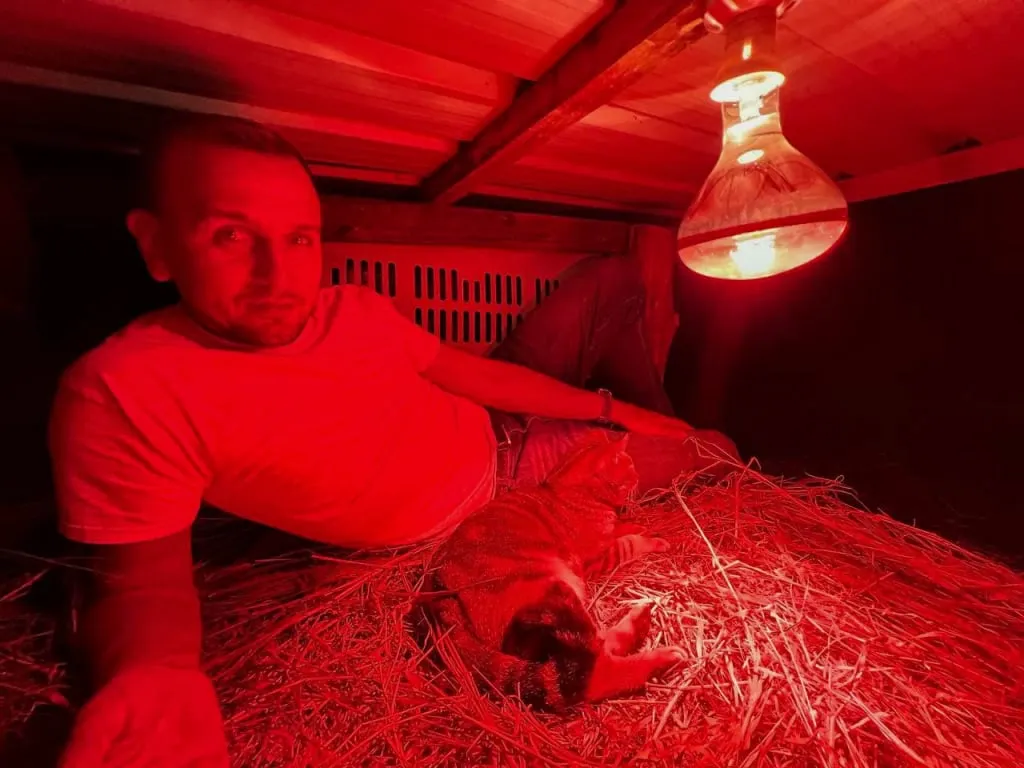
As time passed, our girl, now almost a teenager, consumed less and less milk. Her diet included more grass, leaves, and flowers. In her natural habitat, these are typical foods for bush duikers. They don't even drink water, obtaining it from succulent plants. We hung salt licks for the animals on the premises to ensure she got enough minerals and stayed healthy. After all, the space around was limited, and not all the required plant species were available to Nyasi. Although we also planted the grasses she liked the most.
Nyasi's absolute favorite treats were roses. She adored these flowers, eating them entirely. At first, the lower parts of the rose bushes were nibbled on, and then we began to intentionally bring her treats, feeding her 2-3 flowers at a time. She would pluck petal after petal, then devour the heart of the bud, chewing actively and clearly enjoying the delicacy. Hotel celebrations that left behind numerous flower bouquets were also celebrations for our antelope. But she never overate—after eating a couple of roses, she'd turn away and merrily dash off to her business, playfully leaping over bushes. Yes, young Nyasi became very active and independent.
We always kept in mind that this female common duiker wasn't a pet to get used to or let her get used to us. As much as we loved our Nyasi, we knew for sure that the time would come to say goodbye and return the strengthened animal back to the wild. Yes, sometimes she liked to get close and ask for pets, but the rules of responsible and ethical treatment of wild animals required us to limit such behavior.
So, six months passed, and it was time to find a suitable place to release the grown antelope, considering her background. It needed to be a familiar environment for animals of this kind, safe enough for someone who lost her parents at an early age, who could teach her how to navigate the wild, avoid enemies, and gather resources. A human can never replace an animal's parent. Another important aspect— the place needed to be far enough from human settlements, considering the locals' attitude towards antelopes and Nyasi's high tolerance for humans developed during hand-feeding.
Such a place took a while to find. The nearby part of the Kilimanjaro forest was too close to villages, and there was a high likelihood that the trusting antelope would approach humans. The distant part of the forest was full of predators and unsuitable for this species; it's home to forest antelope species. There were no small forests with shrubbery nearby, and taking the duiker in a cage somewhere far would cause too much stress for this animal. We asked everyone with information, but the right place remained elusive.
We didn't even realize that a year had passed since we had the antelope. Finally, a promising location was found — a large area of a private reserve near Arusha. Many hoofed animals lived there, primarily different types of antelopes, including small and even dwarf ones. Other representatives of the common duiker were there too. But there were no predators. A decision was made — Nyasi would move to live in the Kilimanjaro Golf and Wildlife reserve.
The release of the year-old bush duiker, whom the Altezza Travel team rescued from certain death and sheltered during her growing period, was set for March 16, 2023. The antelope's transportation went smoothly, Nyasi was hardly nervous. At the new place, she was welcomed by the territory owners who cared for the reserve's animals. They confirmed that Nyasi's natural safety was ensured and her favorite flowers and grasses grew abundantly on the premises.

Our antelope began to explore the expanses of the reserve and make friends with her kind. While we were talking to the reserve owners, Nyasi returned several times and then dashed off to other animals again. It seemed she liked her new home.
We're glad we could help another animal. And we must admit, the tiny antelope taught many of us compassion, the ability to care for and be interested in nature and animal life. This is just one of many stories about Altezza Travel and animals, but it's special for us. And as sad as we are now, we're happy that the orphaned duiker is doing well.
Run, Nyasi! It's time to explore new places.
All content on Altezza Travel is created with expert insights and thorough research, in line with our Editorial Policy.
Want to know more about Tanzania adventures?
Get in touch with our team! We've explored all the top destinations across Tanzania. Our Kilimanjaro-based adventure consultants are ready to share tips and help you plan your unforgettable journey.
















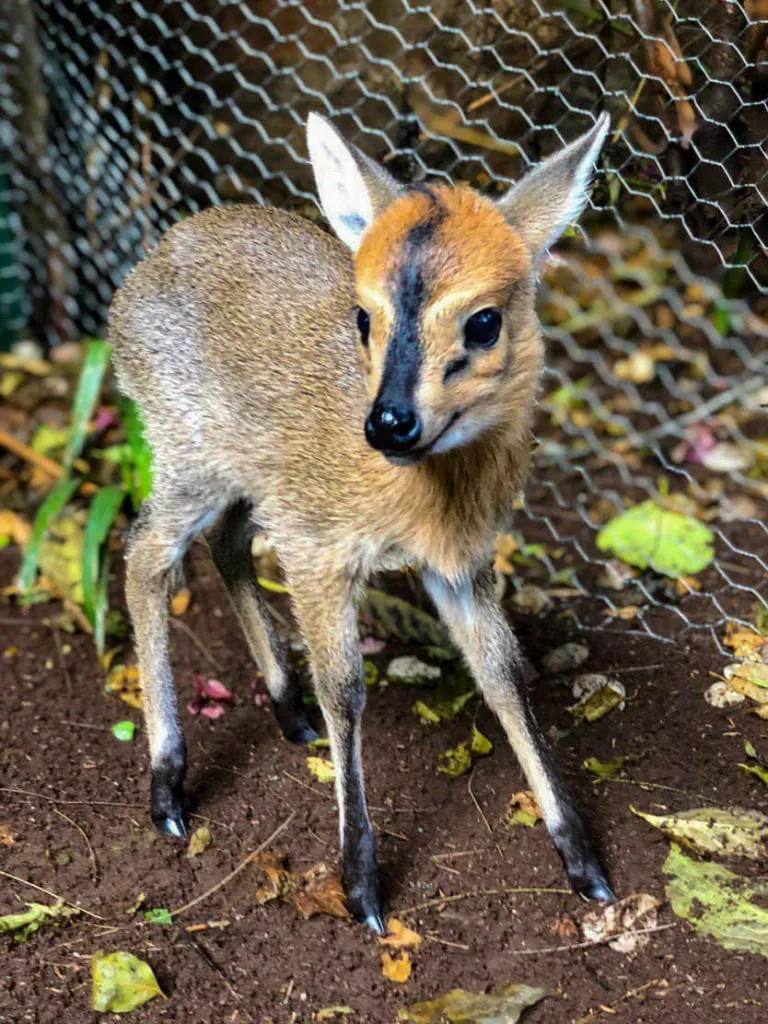


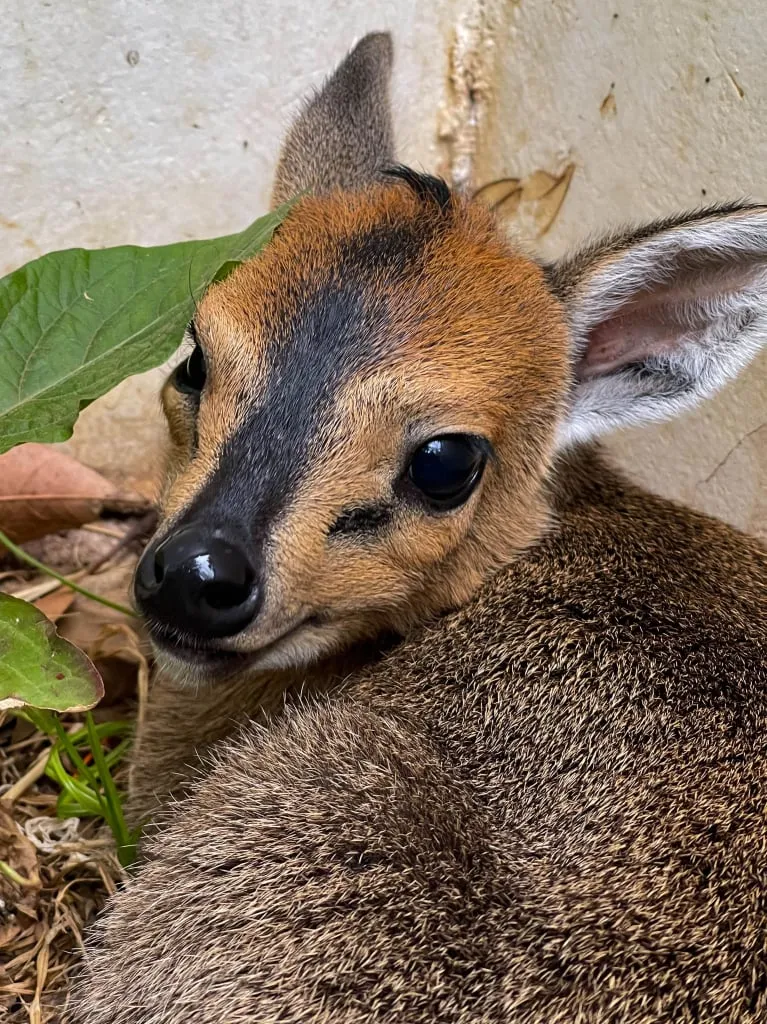
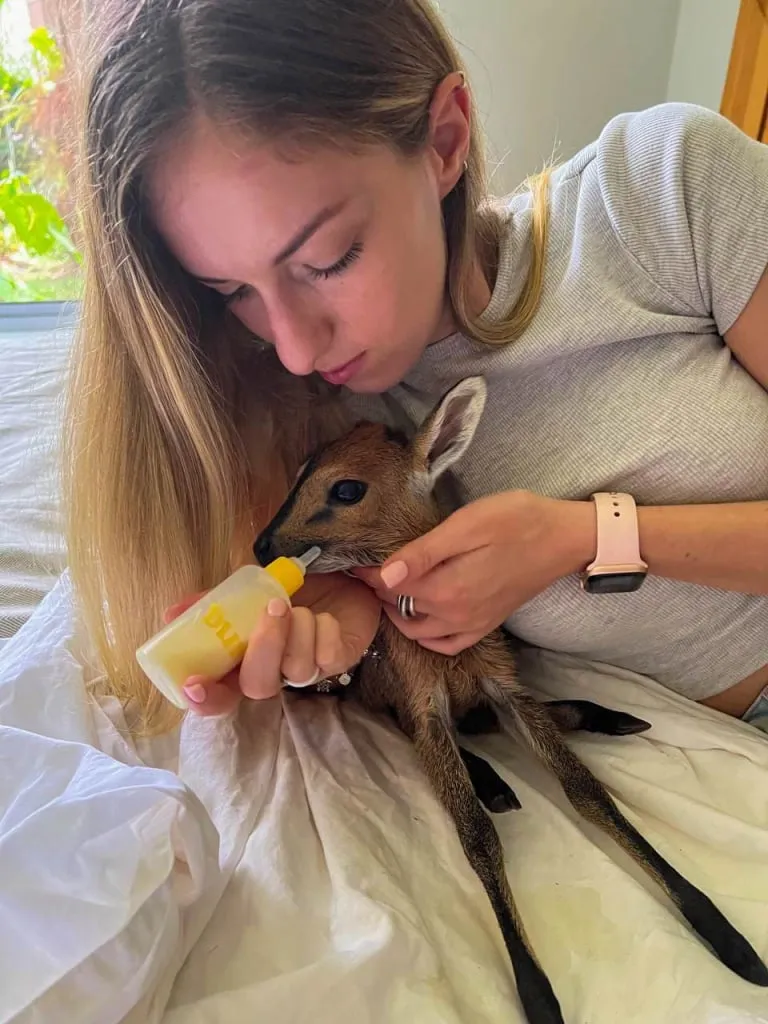


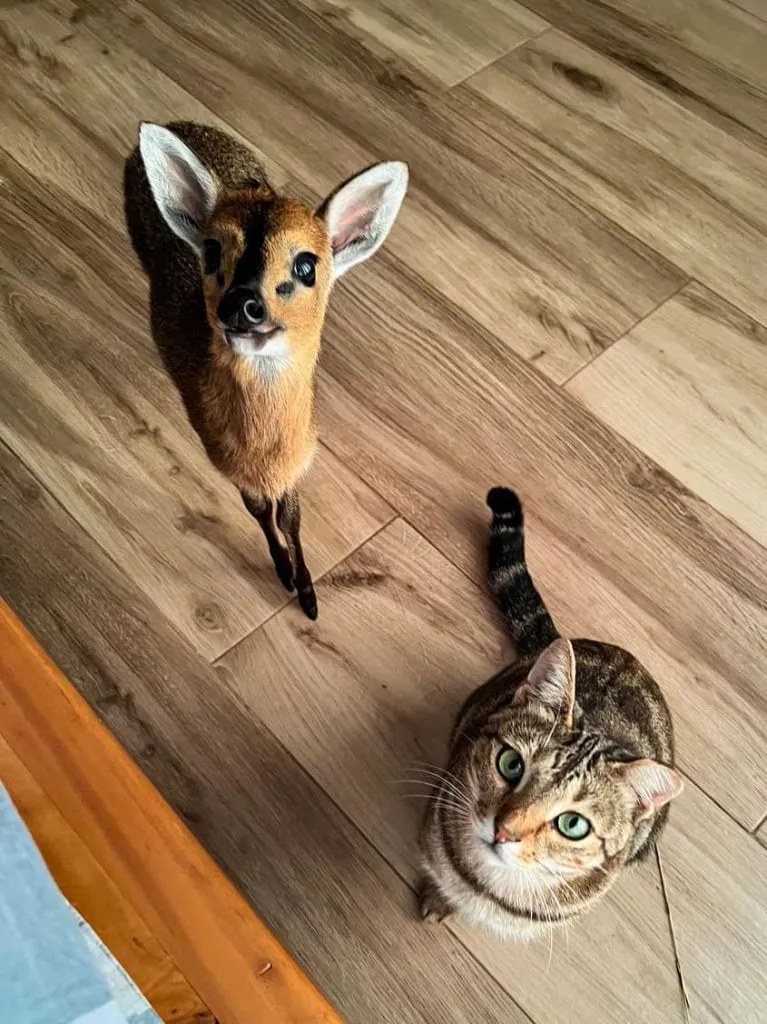
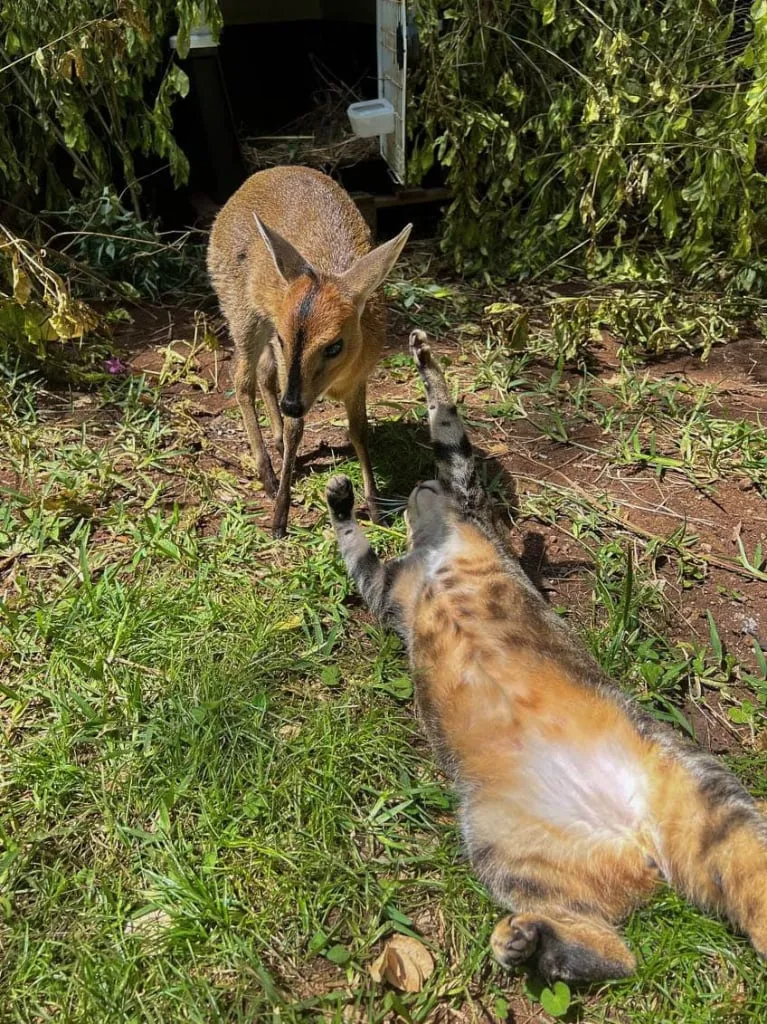
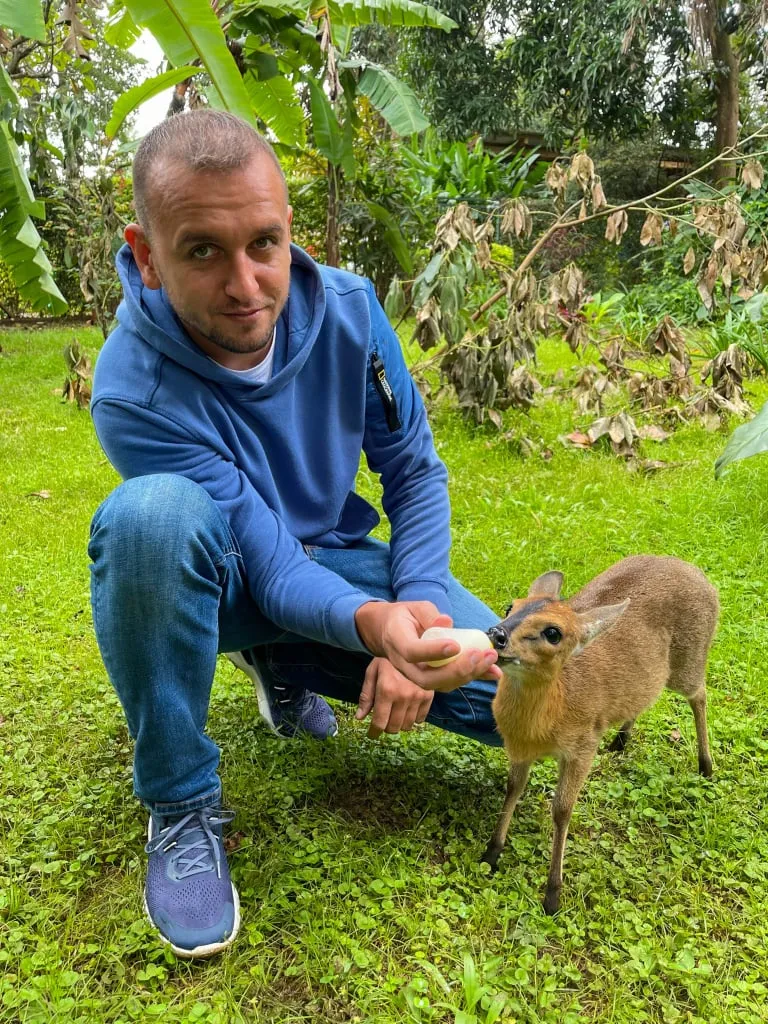

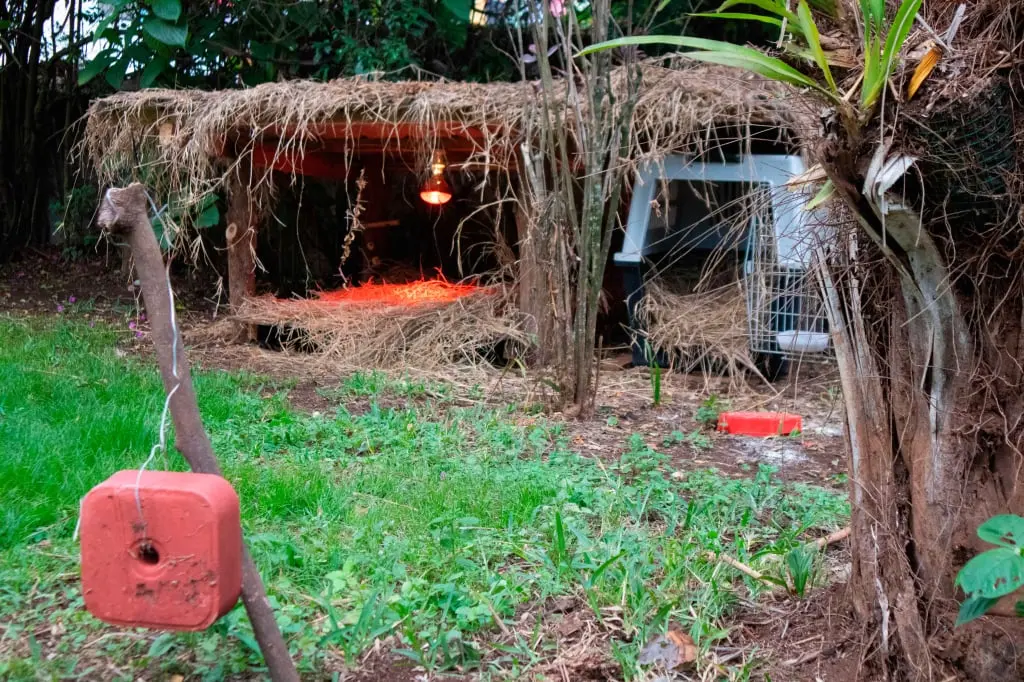
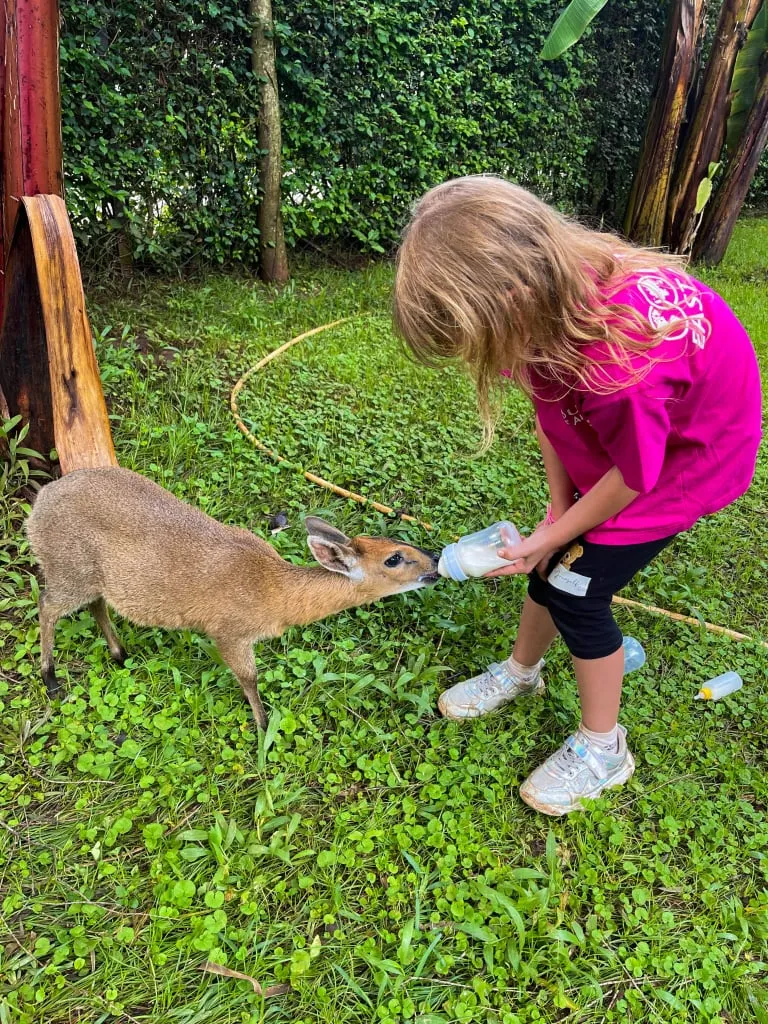




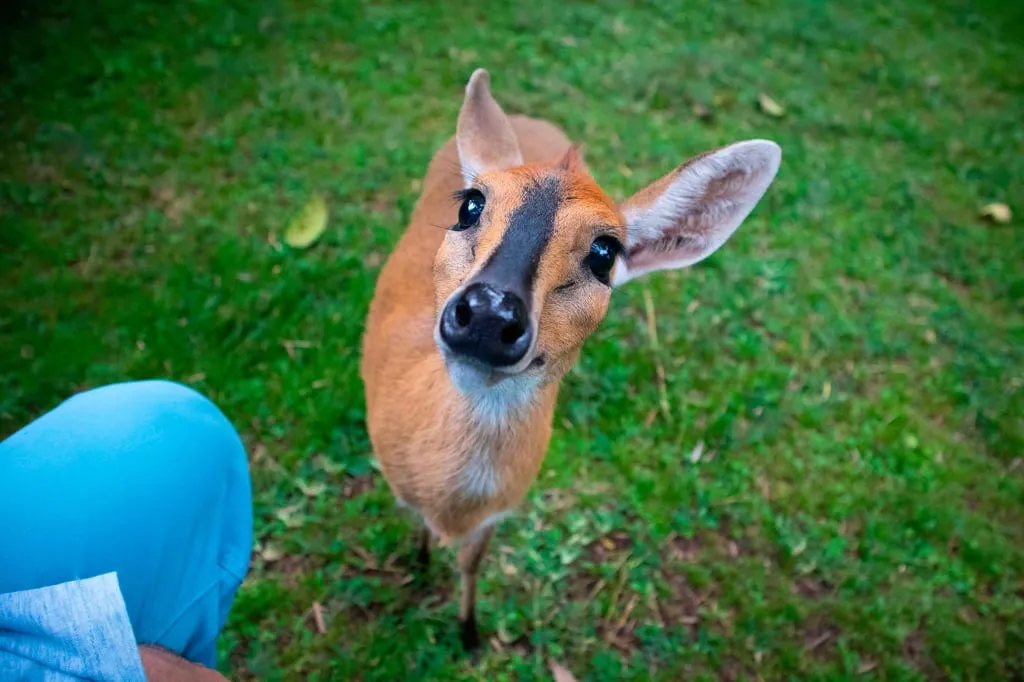
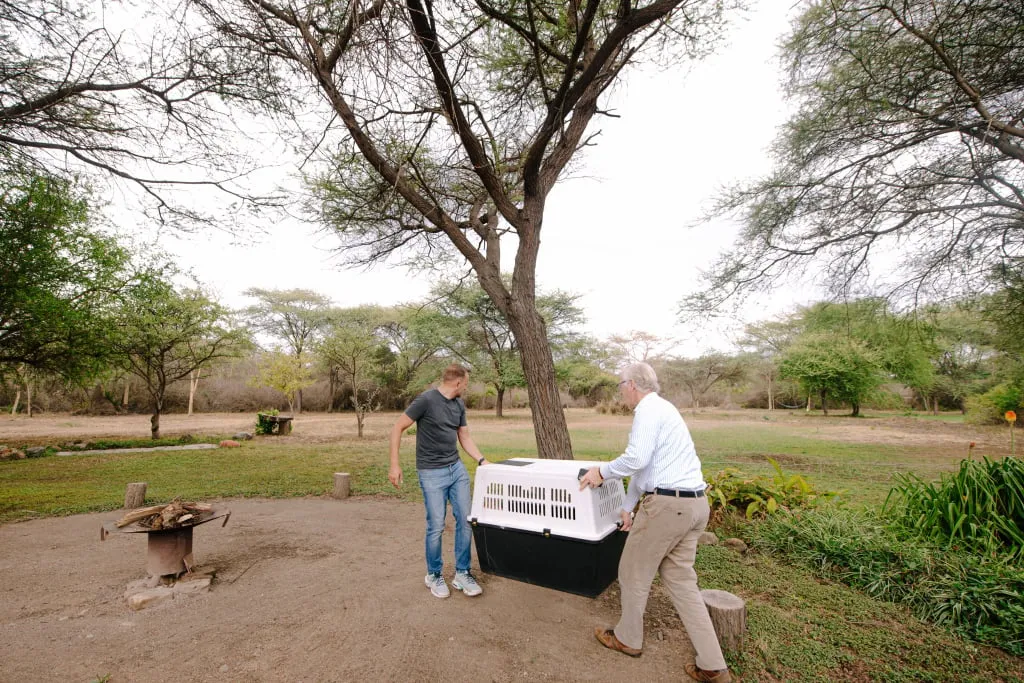


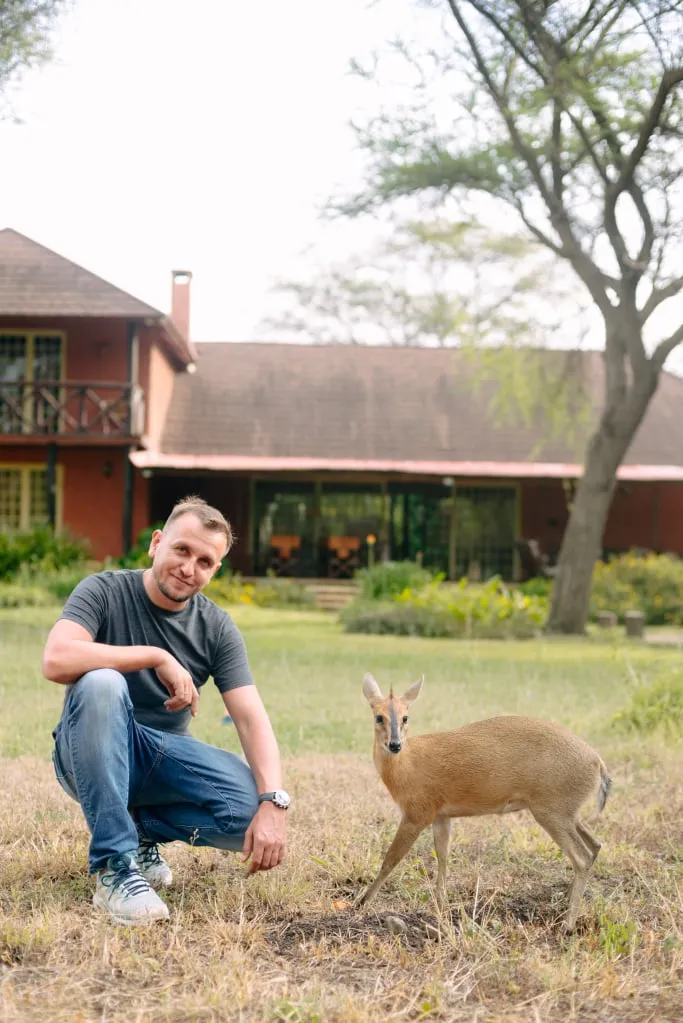
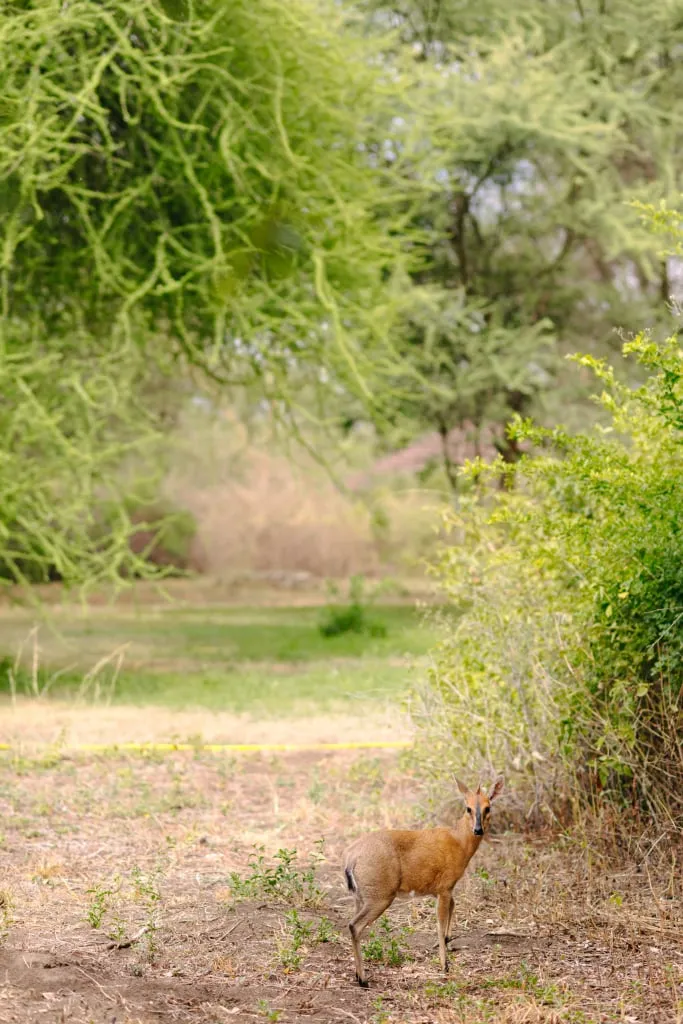
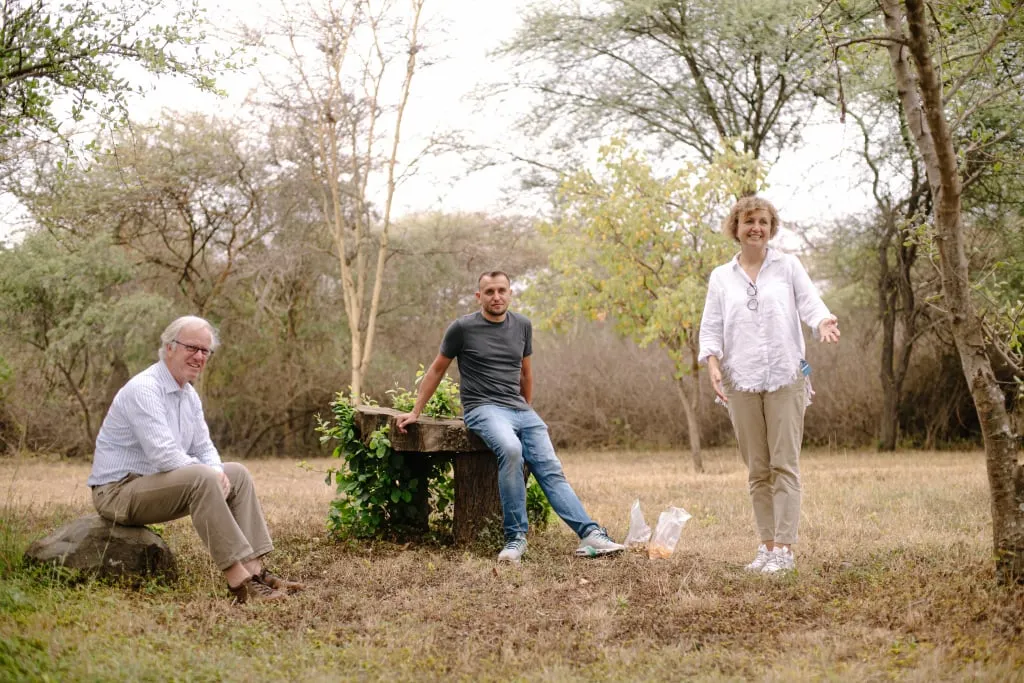


Hi I have a grey duiker . It’s tiny the umbilical cord has just dried. What do I feed it? And how/where to keep it.
Hi Monica!
Firstly, if you just found it in the bush, there's a high chance that its mother is somewhere near. In the wild, mothers are always around their babies, possibly grazing nearby. However, they can be very shy, so she may be afraid to approach while you're around - the best chance of survival for duikers occurs when they remain with their mother. So, if you have the option to return it to the nest and then observe from a distance 2-3 hours later to see if the mother returns, that would be the best approach.
If something happened to the mother, it's a really unfortunate situation, because baby duikers (and other baby animals) require good veterinary care. Without knowing your location and product availability, the easiest solution would be to use goat milk (not cow milk!). You can warm it and use a baby feeding bottle. Duikers quickly figure out how to feed from it. Importantly, you need to stimulate the area around the anus with a cotton pad soaked in water to help the antelope defecate after each feeding. Sometimes, it can even take 7-10 minutes for the duiker to start urinating or defecating, so you need to be patient. Sometimes, she may need to walk around a bit before you can try again. Do not skip this, it's a critical part of ensuring the duiker's survival. In nature, this is done by the mother licking the area. In your case, you need to do it manually after each feeding. Caring for a duiker is extremely time-consuming, akin to having a newborn baby at home. You'll spend your entire day tending to its needs. It's truly a significant commitment.
It's important to provide a semi-dark, quiet area without people around. Don't invite relatives or friends to look at it, as this can stress baby duikers. You can imitate a duiker's nest by putting some dry grass and bush around it. It's best to keep it in a shelter, with minimal weather impact, or even at home.
You might also want to read this article. It's very detailed. In our case, we were limited by product availability in Tanzania, so we used a goat milk formula, which worked well for Nyasi. She was really healthy at the release stage. Later, you'll need to buy minerals and maintain a proper diet for the antelope after she stops drinking milk.
At the same time, if you have any veterinary facilities nearby, our best advice would be to contact them. They may be able to assist in some way. Also, keep in mind that keeping a wild antelope at home is illegal in many countries.